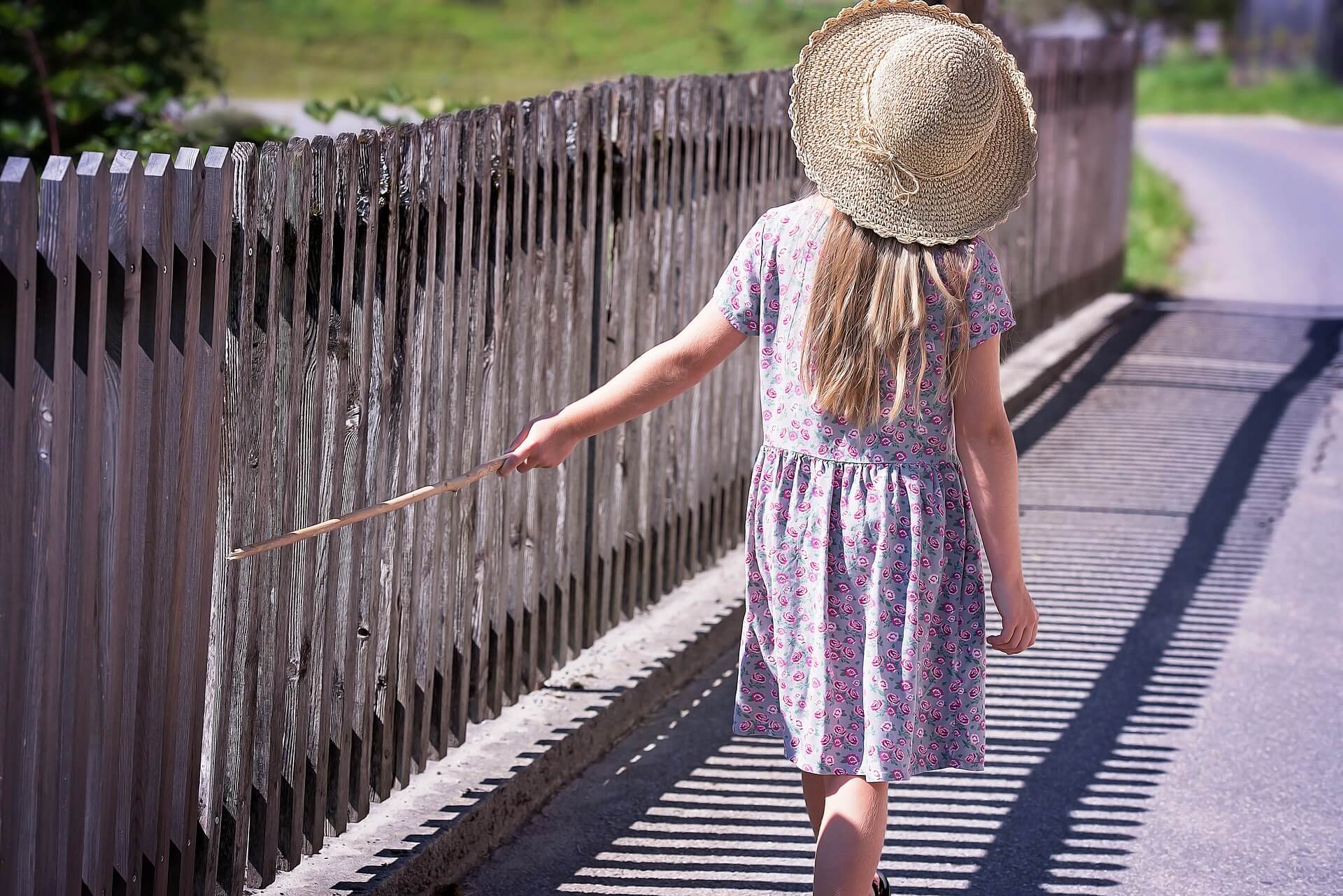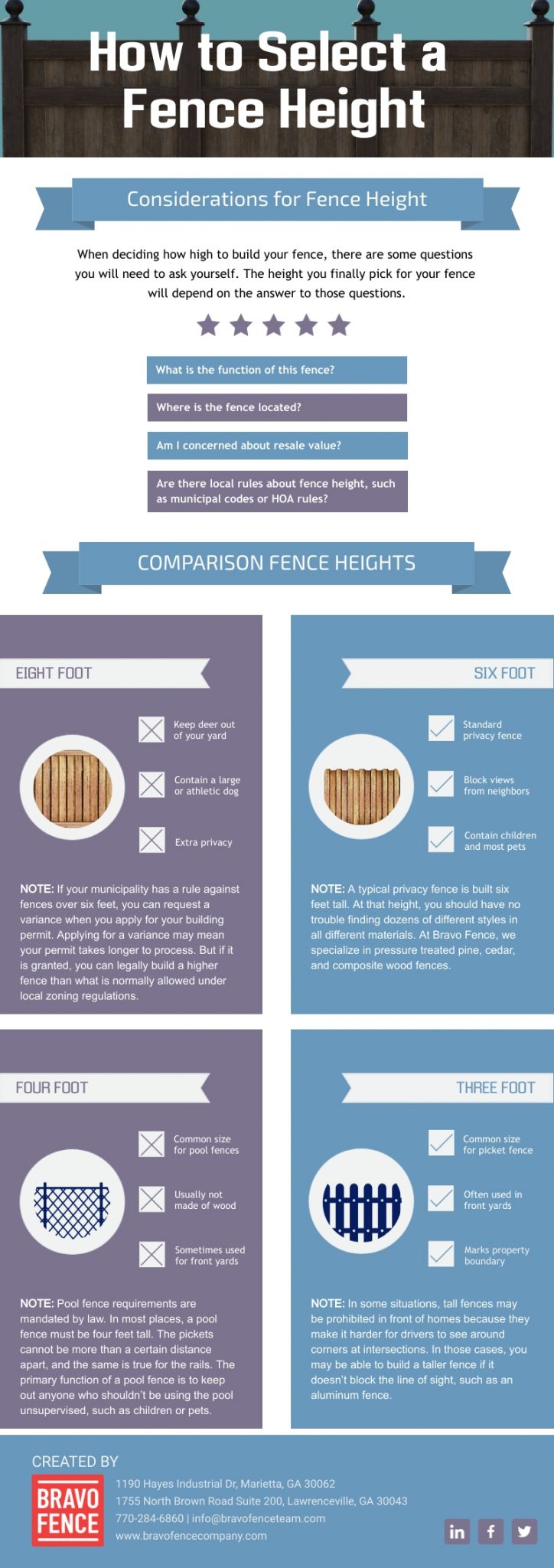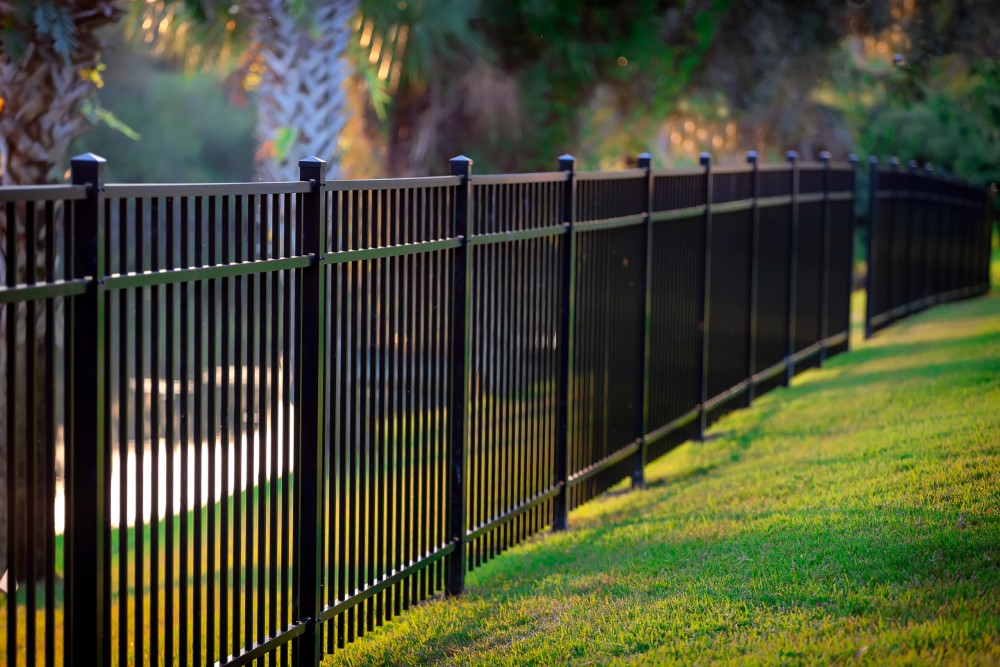
How to Select a Fence Height
When it comes time to select a fence, there are plenty of options. Some of the big choices include deciding on the style and material fence. But one significant decision that people often don’t think of is how high to build a fence. If you are replacing a fence, most people just assume they will replace it with one that is very similar. But you don’t have to stick with what you have. And if you are building a brand new fence, you have to decide from the outset what fence height you want to install.

Considerations in Picking a Fence Height
When deciding how high to build your fence, there are some questions you will need to ask yourself. The height you finally pick for your fence will depend on the answer to those questions.
- What is the function of this fence?
- Where is the fence located?
- Am I concerned about resale value?
- Are there local rules about fence height, such as municipal codes or HOA rules?
A fence could, in theory, be any height you choose. In reality, however, there are some standard sizes that most fences conform to. Using a standard size is cheaper and easier than building a completely custom fence. If you build to a standard size, you should be able to find posts, pickets, boards, and even complete sections to match any style of fence. There are many excellent style and material options for standard-sized fences. Standard sizes are typically 3’, 3.5’, 4’, 6’, and 8’.
If you choose to go with a custom size, you will likely pay a lot more. The pieces of your fence will need to be cut to size or even custom fabricated. Since there is a pretty wide range of fence sizes available, there is rarely any reason to select a custom size.
Privacy Fence
A wooden privacy fence is one of the most common residential fences most installers see. A solid wooden privacy fence is a great way to block off a backyard. It can keep neighbors and other from seeing into your private space. It can also help block the view looking out from your yard. If you live along a busy street or your yard backs up onto an unpleasant site—like the back of a building or some trash bins—a privacy fence can block the view.
A typical privacy fence is built six feet tall. At that height, you should have no trouble finding dozens of different styles in all different materials. At Bravo Fence, we specialize in pressure treated pine, cedar, and composite wood fences. You can take a look at some of the styles of our wooden fences here.
Pressure treated pine is an excellent value that stands up well to all sorts of weather. The natural wood has a classic look and is available in a wide range of styles, both for the boards and the posts. Cedar is a beautiful wood that many choose for its high-end look at a great price. Cedar is especially suited to outdoor use, as it is insect and rot resistant. Composite is a great choice for homeowners looking for a low-maintenance, long-lasting fence. Wood composite is a manufactured material made from wood fibers and recycled plastic. It is impervious to much of the damage that normally affects a wooden fence.
A six foot fence is also ideal for keeping young children and pets contained and safe in your backyard. Six feet is tall enough to keep most dog breeds in your yard. However, if you have a large breed, like a retriever, or a dog that has exceptional laping skills, you many want to consider an extended privacy fence.
Extended Privacy or Deer Fence
In some cases, six feet isn’t sufficient for a privacy fence. In those cases, the tallest standard height available is eight feet. This height is often referred to as a deer fence, because it is tall enough to keep out leaping deer. If your home backs up onto wood or an open space with a local deer population, this may be ideal. It keeps deer from entering your yard and eating your plants or terrorizing your pets. An eight foot fence is also recommended for large or athletic dogs that might be able to get over a six foot fence.
In some situations, an eight foot fence is actually necessary for full privacy. If there are other properties uphill from your home, you may need a higher fence to block their view into your yard. Or, if your property abuts a loud or busy street, the extra height can help keep out noise. However, before installing an eight foot fence, check your local codes and municipal rules. Many municipalities have rules that limit fences to six feet tall.
If you live in an area with a homeowners association, check their rules, as well. Many HOAs have even stricter rules that govern the height, material, color, and style of fences and partitions.
If your municipality has a rule against fences over six feet, you can request a variance when you apply for your building permit. Applying for a variance may mean your permit takes longer to process. But if it is granted, you can legally build a higher fence than what is normally allowed under local zoning regulations.
Shorter Fences
In some situations, a shorter fence is preferable. Many cities and homeowners associations limit the height of fences and partitions in the front of a property. For example, backyard fences may be permitted up to six feet, while front yard fences are limited to four or even three feet. In most cases, that’s just fine, because front yard fences are rarely privacy fences. Front yard fences are often decorative or serve as a visual marker to separate your property from a neighbor or from the street. The classic American white picket fence is a good example of a shorter fence.
Most front yard picket fences are built at three feet. They are beautiful to look at and can keep people off your lawn, without blocking the view in and out of your home. In some situations, tall fences may be prohibited in front of homes because they make it harder for drivers to see around corners at intersections. In those cases, you may be able to build a taller fence if it doesn’t block the line of sight, such as an aluminum fence.
Pool Fences
Pool fences are a very specific type of fence. While the fence itself can be of any material or style, the details are mandated by law. In most places, a pool fence must be four feet tall. The pickets cannot be more than a certain distance apart, and the same is true for the rails. The primary function of a pool fence is to keep out anyone who shouldn’t be using the pool unsupervised, such as children or pets. So pool fences need to be designed with no space large enough for a child to get through and no way to climb over the top. If you are building a pool, most jurisdictions require a pool fence or some sort of barrier. Check with your pool builder or contractor and make sure you know the regulations for a pool fence. An inadequate fence is both unsafe and illegal.
How to Choose the Correct Height for Your Fence
If you’re considering installing a new fence or replacing an old one, contact Bravo Fence Company. We will come to your home to look at your property and help you determine the best type of fence for your needs. We provide fences or every height and style, so we’re happy to give you lots of options.
